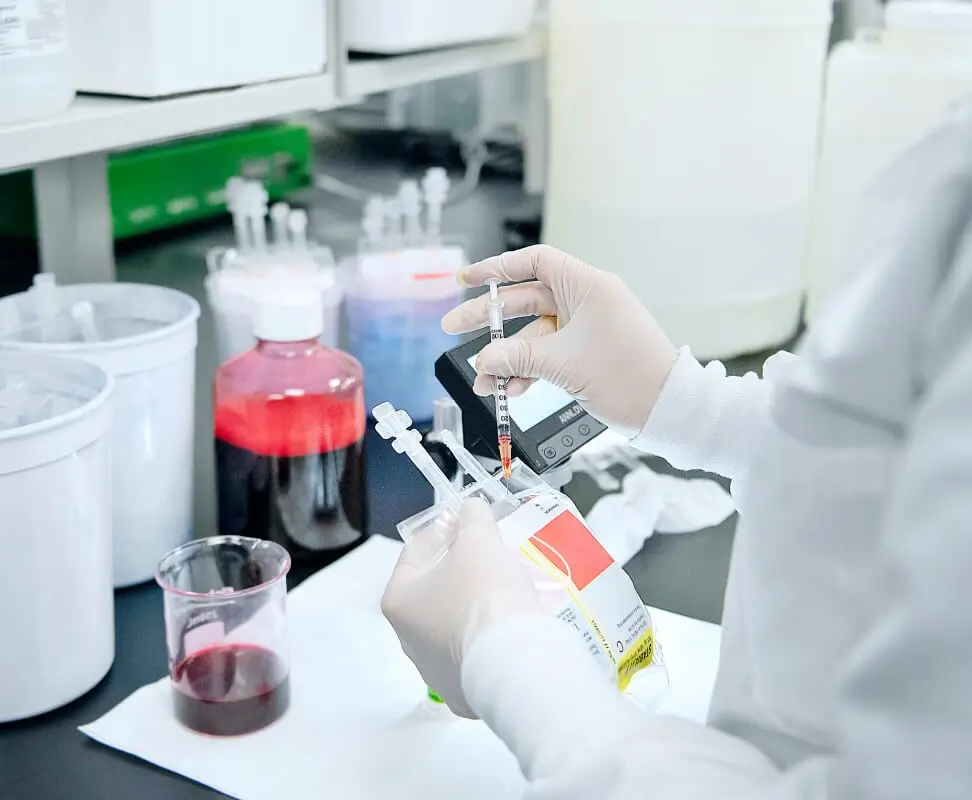
Container Testing
Container testing ensures that a selected container is suitable to contain and be in direct contact with a drug product. Specifically, these tests are conducted to understand the potential and impact of materials migrating into and interacting with the pharmaceutical product, risking degradation and contamination. Infinity Laboratories’ analytical experts apply their extensive experience with many container compositions and configurations to ensure the safety of your drug product.
Container testing ensures that a selected container is suitable to contain and be in direct contact with a drug product. Specifically, these tests are conducted to understand the potential and impact of materials migrating into and interacting with the pharmaceutical product, risking degradation and contamination. Infinity Laboratories’ analytical experts apply their extensive experience with many container compositions and configurations to ensure the safety of your drug product.
Understanding Container Suitability
Container materials can react with and/or migrate into the drug product they are designed to protect. Thorough analysis is required to ensure that specified containers meet quality, safety, and regulatory standards. Some of the critical aspects of pharmaceutical container testing include:

Container Material Compatibility: Drug products can interact with container materials, potentially leading to degradation or contamination. Compatibility testing ensures that the container materials are suitable for the intended product and do not interact with or release harmful substances into the product.
Extractable & Leachable Studies: Over time, containers may release trace amounts of chemicals into the product. Extractable studies identify chemicals that could potentially migrate from the container material into the drug product, while leachable studies determine if these migrated chemicals are present in quantities that could affect the product’s safety or efficacy. Learn more about our Extractable & Leachable testing services.
Closure Integrity Testing: This testing evaluates the container closure and its ability to maintain a seal to keep potential contaminants from the drug product. Since the closure is essential for maintaining product sterility, this testing is required for parenteral drug products.
Closure Material Compatibility: Just as a container can interact with a drug product, so can closure materials. Closure materials must be suitable for the product and not interact with or release harmful substances into the product.
Container Types Tested
Materials used for and configurations of drug product containers are diverse. Infinity’s’ testing experts and network of advanced laboratories meet the needs of pharmaceutical developers utilizing ranging container types, including:
- HDPE & LDPE
- Glass bottles and syringes (Types I, II, III, NP)
- Polypropylene
- Plastic & laminate pouches
- Single unit dose and unit dose blister cards
- Elastomeric closures
Container Testing Services
Infinity’s network of nationwide labs is guided by USP, EP, JP, and FDA compendia procedures designed to ensure that the container composition and functionality are appropriate for the product in question.
Closure Integrity Testing
Closure Integrity Testing
Standard: USP <1207>, USP <382>
Completed via a dye ingress method, closure integrity testing ensures that the utilized closure is capable of maintaining sterility.
Elastomeric Closures
Elastomeric Closures
Standard: USP <381>
Tests assess the functionality of closures, including penetrability, fragmentation, and self-sealing capacity, intended to be pierced by a hypodermic needle, as well as biological and physiochemical properties.
Permeation Testing
Permeation Testing
Standard: USP <671>
Seeks to understand the functional properties of the container, most notably water vapor transmission (permeation) and spectral transmission (light resistance).
Plastic Materials of Construction and Plastic Packaging Systems for Pharmaceutical Use
Plastic Materials of Construction and Plastic Packaging Systems for Pharmaceutical Use
Standard: USP <661.1> and USP <661.2>
Extending USP <661>, these tests comply with more rigorous standards that demonstrate that a polymer raw material within primary packaging that comes in contact with the pharmaceutical product and any relevant secondary packaging is well-characterized and suitable for its intended use.
Plastic Packaging Systems & Materials of Construction
Plastic Packaging Systems & Materials of Construction
Standard: USP <661>
Identification, characterization, and physiochemical testing of high-density polyethylene (HDPE), low-density polyethylene (LDPE), polypropylene (PP), polyethylene terephthalate (PET), polyethylene terephthalate G (PETG), and other polymers.

